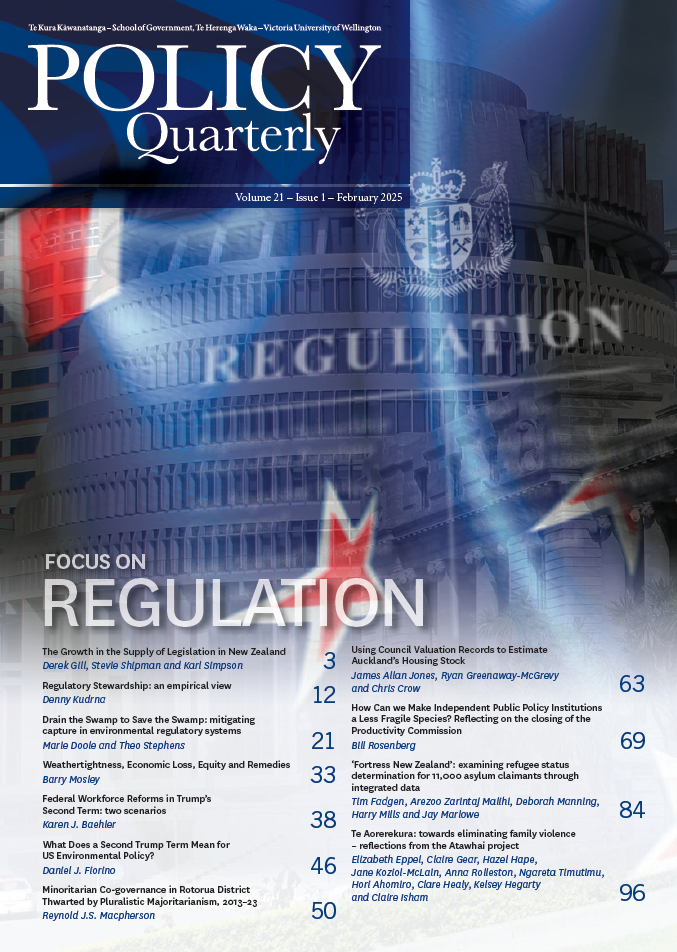‘Fortress New Zealand’: examining refugee status determination for 11,000 asylum claimants through integrated data
DOI:
https://doi.org/10.26686/pq.v21i1.9729Keywords:
asylum, resettlement, New Zealand, health service utilisation, mental health, Integrated Data Infrastructure (IDI)Abstract
This article presents a profile of Aotearoa New Zealand’s asylum claimants – people who have sought recognition as a refugee or protected person and then applied for a temporary visa. Sourcing data from New Zealand’s Integrated Data Infrastructure (IDI), we considered 11,091 refugee claimants between 1997 and 2022. The data suggests that the path to recognition can be long and circuitous, requiring multiple applications before status recognition. The data also reveals a wide health and mental health services uptake gap despite recent policy changes. When read together, we contend that this data supports the notion that everyday, discerning bordering exists in New Zealand through different forms of permeability and permanence based on gender and ethnicity. The article concludes with some insights for future policy directions.
Downloads
Downloads
Published
Issue
Section
License
Permission: In the interest of promoting debate and wider dissemination, the IGPS encourages use of all or part of the articles appearing in PQ, where there is no element of commercial gain. Appropriate acknowledgement of both author and source should be made in all cases. Please direct requests for permission to reprint articles from this publication to Policy-Quarterly@vuw.ac.nz.



